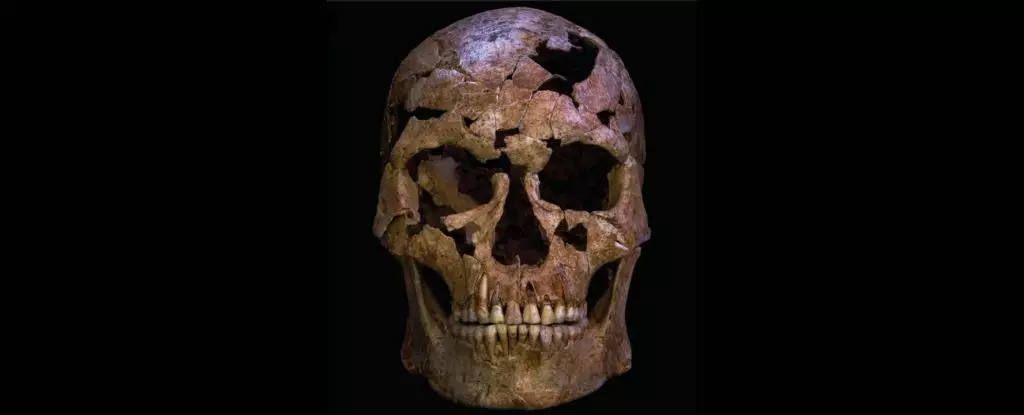In an era often romanticized as primitive and untouched, recent archaeological discoveries paint a disturbingly raw picture: violence is, and has always been, a fundamental facet of human existence. The discovery of ancient bones in Vietnam’s Thung Binh 1 cave challenges the sanitized narratives of our prehistoric ancestors. Instead of a peaceful, harmonious existence, these relics reveal that conflict, aggression, and deadly confrontations have been woven into the fabric of human history from its very inception. This realization demands a profound reconsideration of how we perceive human nature—not as inherently noble or peaceful, but as an entity capable of brutal, calculated violence from millennia ago.
The bones of a man roughly 12,000 years old are not merely fragments of the distant past; they are a stark reminder of humanity’s darker side. His death, seemingly violent and deliberate, uncovers a story of conflict that predates many prominent civilizations. The evidence suggests that this individual was not an unfortunate casualty of nature’s wrath—he was likely a victim of intentional harm, inflicted by another human being. Such revelations challenge the comforting mythologies we tell ourselves about early societies being primarily egalitarian or peacemaking, suggesting instead that rivalry, territorial disputes, or personal vendettas may have shaped social interactions even then.
Debunking Romantic notions of prehistoric innocence
It is tempting to romanticize early humans as noble survivors, living in a state of innocent survival, perhaps driven by necessity and community cohesion. However, the archaeological record increasingly points to a far more violent reality. The case of TBH1 confronts this myth head-on. The trauma evident in his bones—particularly the fracture and subsequent infection in his neck—illustrates a brutal assault. The embedded quartz projectile indicates a calculated attack, likely a form of early interpersonal violence or even targeted homicide. Moreover, the fact that the projectile was non-local suggests that conflicts may have escalated beyond simple territorial disputes, possibly involving complex social dynamics, rival groups, or personal enmities.
This evidence challenges the notion that early hunter-gatherer communities were devoid of violence or conflict. Instead, it hints at a society where lethal encounters could have been commonplace, possibly even accepted as part of life. The presence of a deliberately used projectile also indicates the emergence of weaponry as tools of aggression, an unsettling but unavoidable aspect of human technological evolution. It is an insight into a primordial instinct—human beings as inherently aggressive creatures capable of lethal violence, not just survivalist cooperation.
The Broader Implications: Violence as a Human Constant
More disturbing than the bones themselves is the realization that acts of violence like these are not anomalies but integral to human history. The comparison to other ancient sites, such as the Jebel Sahaba cemetery or Ötzi the Iceman, reveals a pattern of violence stretching across millennia. The fact that ancient people grappled with deadly conflicts suggests that violence is deeply ingrained in human biological and social predispositions.
This perspective should inspire a more nuanced dialogue about human nature and our capacity for both destruction and cooperation. Recognizing outbursts of violence among our ancestors does not necessarily condemn modern society but urges us to understand the roots of conflict more honestly. It underscores the importance of fostering social systems that minimize violence and promote peace, acknowledging that the potential for brutality exists within us all. We must confront this darker side as part of our collective history, not deny it, if we are to build a more empathetic and just future.
In the end, these ancient bones are not just relics of a violent past—they serve as a sobering mirror reflecting our own potential. Understanding that humanity’s history involves brutality as much as ingenuity can be both unsettling and empowering. It places a responsibility on us, as modern humans, to consciously choose peace over conflict, to acknowledge the shadows within ourselves, and to strive relentlessly toward a future where violence is no longer an inevitable default but a tragic relic of our distant past.

